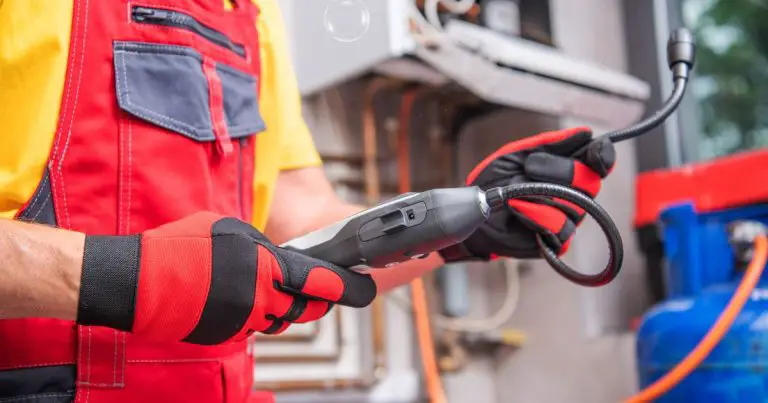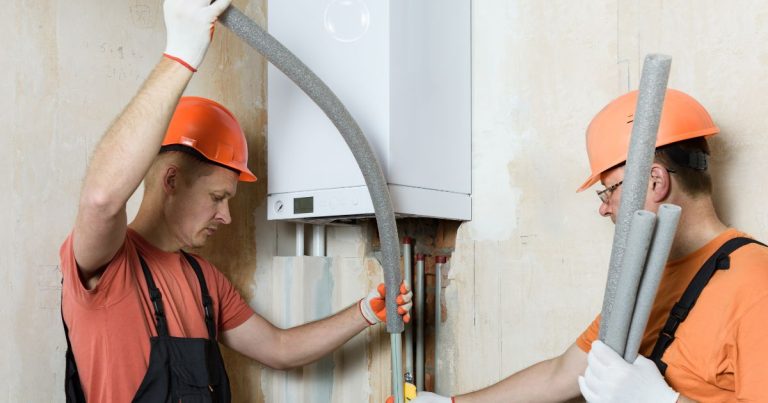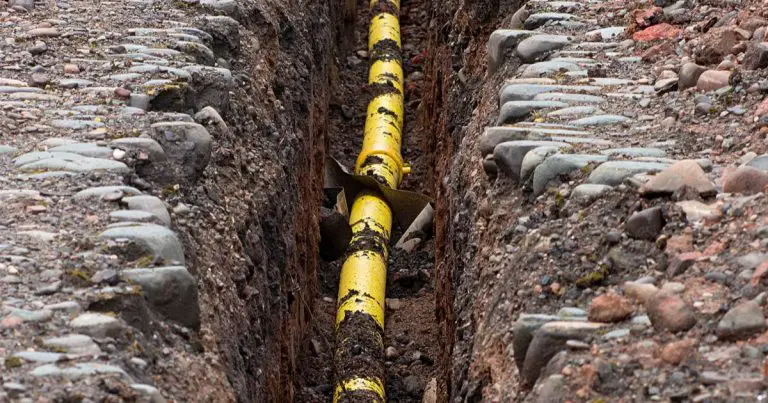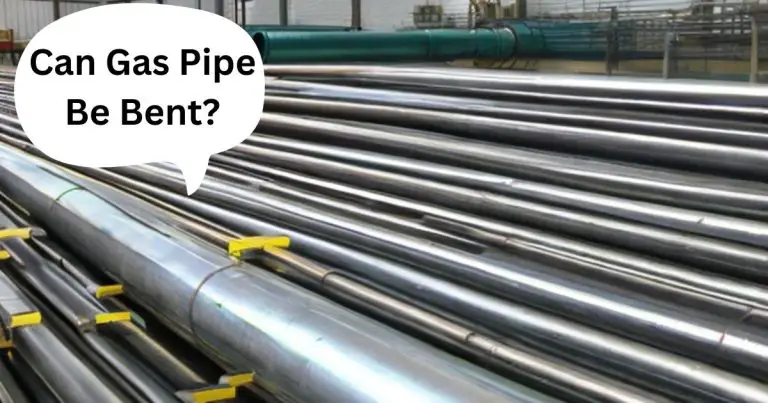Can Static Electricity Ignite Natural Gas? (Tested by Experts!)

Static electricity has the potential to be a powerful force, and it turns out that this mysterious power can even ignite natural gas!
This article will explore the ways in which static electricity can spark an explosion, as well as how we can prevent such incidents from happening.
Get ready to learn all about the relationship between static electricity and natural gas—it’s both fascinating and important for safety!
Can Static Electricity Ignite Natural Gas?
Static electricity has the potential to be a powerful force, and it turns out that this mysterious power can even ignite natural gas! This article will explore the ways in which static electricity can spark an explosion, as well as how we can prevent such incidents from happening. Get ready to learn all about the relationship between static electricity and natural gas—it’s both fascinating and important for safety!
What is static electricity?
Static electricity is a form of electrical energy that occurs when electric charge accumulates on the surface of an object.
It can be caused by friction, contact with another charged object, or even the transfer of electrons across air molecules.
The buildup of static electricity creates an imbalance between positive and negative charges which then produces an electric field.
When two objects come into contact and are then separated, they exchange electrons due to the difference in their electrostatic potential energies leading to one being positively charged and the other negatively charged.
This phenomenon is known as triboelectricity or “friction electricity”; for instance, walking across a carpet can build up static energy between shoes and flooring due to this effect.
Static electricity poses several dangers depending on its magnitude; it has been known to cause sparks that could potentially ignite flammable materials such as natural gas if not controlled properly.
Therefore it is important to take necessary precautions when handling flammable materials in order to avoid any unwanted occurrences related to static electricity.
Can something catch on fire from static electricity?
Can something catch on fire from static electricity? The answer is yes, it is possible for something to catch on fire from static electricity.
Static electricity is the buildup of electrical charge on an object, and when it is discharged, it can create a spark.
If the spark is close enough to a combustible material, such as a flammable liquid or gas, it can ignite the material and cause a fire.
This is why it is important to ground yourself when working with flammable materials, as it can help to prevent static electricity from building up and causing a spark.
Additionally, it is important to avoid rubbing materials together that can create static electricity, such as wool and nylon, as this can also create a spark that can ignite a fire.
What is the science behind static electricity igniting natural gas?
If static electricity does indeed ignite natural gas, then it raises the question: why don’t we see this more often occurring?
Indeed, many users experience that their heating systems are less likely to ignite upon turning them on than before.
However, when there is ample electricity in your home – such as during thunderstorms or during power outages – you may be more likely to witness such spectacular events.
Yet despite these regular occurrences, most gas systems remain unperturbed by static charge forces.
After all, high voltage electrical discharges and surges do not commonly occur.
Igniting Natural Gas by Sparks or Flames:
gniting natural gas by sparks or flames is a process that has been used in many industries for decades.
This method of ignition relies on the spark generated from an external source, such as a match or lighter, to ignite the gas molecules and cause combustion.
Once ignited, the reaction between oxygen and methane creates heat energy which can be used to power appliances or machinery.
This type of ignition is generally considered safe when proper safety precautions are followed.
Natural gas must first be piped into an enclosed space where it will not come into contact with any sources of flame such as open candles or cigarettes.
The pipe should also have flash arrestors installed to prevent backfires from occurring if there is a sudden increase in pressure inside the pipeline.
Additionally, it’s important to make sure any combustible materials in close proximity are kept at least 3 feet away from the igniter device itself.
Overall, igniting natural gas through sparks or flames is one of the most reliable methods available today for safely harnessing its potential energy output without putting individuals at risk of fire hazards or other dangerous conditions associated with other forms of ignition like static electricity discharges.
Can Static Electricity Cause a Fire or Explosion?
Static electricity is a powerful force that can cause sparks and even fires if it comes into contact with the right environment or material.
This makes the question of whether static electricity can cause a fire or explosion particularly relevant when considering natural gas, as it is highly flammable.
In general, static electricity poses an ignition risk to any combustible materials like gasoline vapors and natural gas, which are both prone to explosions in certain environments.
It only takes a small spark of static electricity for these materials to ignite and cause a serious fire or explosion.
In addition, since these substances have lower energy thresholds than other sources of ignition such as open flames, they are more likely to be ignited by static electricity than many other materials.
The amount of static electric charge required for an explosion varies depending on various factors such as air temperature and humidity levels.
However one thing is clear: any source of ignitable fuel should never come into contact with potential sources of static discharge such as electrically charged objects or surfaces.
Therefore if natural gas is being stored near electrical equipment then safety measures must be taken to ensure that no sparks occur in order to prevent an accident from occurring due to the presence of combustible gases combined with potentially dangerous friction-generated charges.
Risk Factors for Fires Ignited Due to Static Discharges:
Static discharge has long been known as a cause of fires, but many people don’t know what risk factors to look out for.
In an article on “Can static electricity ignite natural gas?”, it is important to explain the common causes of static discharge-ignited fires. Below are some of the most common risk factors:
1) Low Relative Humidity –
As humidity falls below 40%, static discharges become much more likely and can more easily lead to spark-based ignition sources.
2) Increase in Pressure Differentials –
High pressure differences between different areas or points in a system can increase the likelihood that a spark will occur when two objects interact with each other.
3) Improper Grounding –
Poorly grounded equipment provides too little resistance for electrical charges which increases the chance that there could be sparks present when two surfaces come into contact with each other.
4) Unprotected Electronics –
Without adequate protection, electronics can provide an easy path for sparks to travel through and potentially ignite gas particles that have accumulated nearby due to leakage or venting issues.

How to Prevent Accidental Fires from Electric Sparks?
Preventing accidental fires from electric sparks is an important step in avoiding a potentially dangerous situation.
To do this, follow these steps:
1. Install and maintain GFCI outlets near natural gas sources to prevent electrical shock and fire hazards
2. Avoid using extension cords or power strips near combustible materials such as paper or cardboard
3. Keep all wires insulated with rubber sheathing and replace any worn out wiring immediately
4. Make sure all appliances are turned off when not in use
5. Be aware of potential spark-producing actions like grinding metal, welding, soldering, etc., and take precautions to avoid them if possible
6. Have frequently used electrical equipment inspected regularly by a professional
How to Safely Handle Natural Gas and Avoid Static Electricity?
Natural gas is a combustible material that must be handled with care and safety precautions.
To ensure safe handling when working with natural gas, follow these steps:
1. Make sure the area is well ventilated to prevent buildup of natural gas vapor.
2. Wear appropriate protective clothing such as gloves, rubber-soled shoes, and eye protection when dealing with natural gas directly.
3. Avoid smoking or any open flame in an area where there may be a presence of natural gas vapors or leaks.
4. Use non-sparking tools when working around areas containing natural gas to avoid static electricity build up which could ignite the combustible material if static reaches high levels through friction between objects or surfaces within an enclosed space.
This includes avoiding contact between materials like wool, nylon and polyester fabrics as they can generate static electricity more easily than other fabrics while moving against each other’s surface .
Conclusion:
Though gas may seem stable, it can ignite from static electricity. If you have any queries regarding this matter, give us a call anytime!
Though it is true that this phenomenon can occur, there is no need to panic. Our team is available 24/7 to provide assistance in locating the source of the issue and assessing any possible restoration needs related to it.
Do not hesitate to contact us if you’d like more information on our Gas Detector or our Gas Detector Services.






